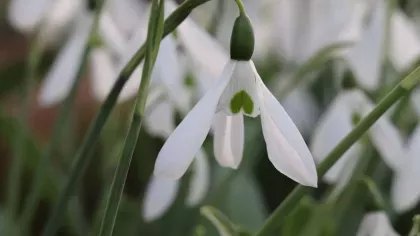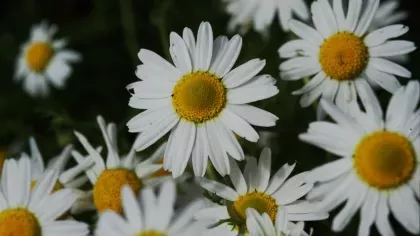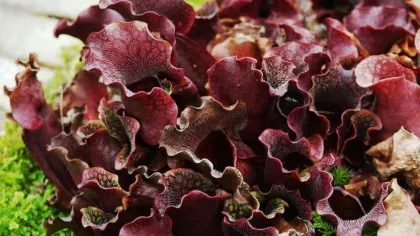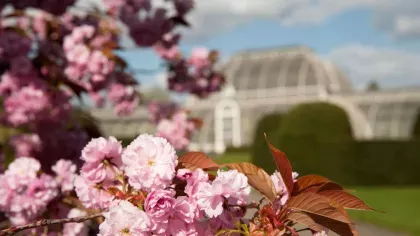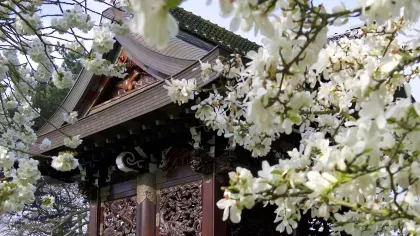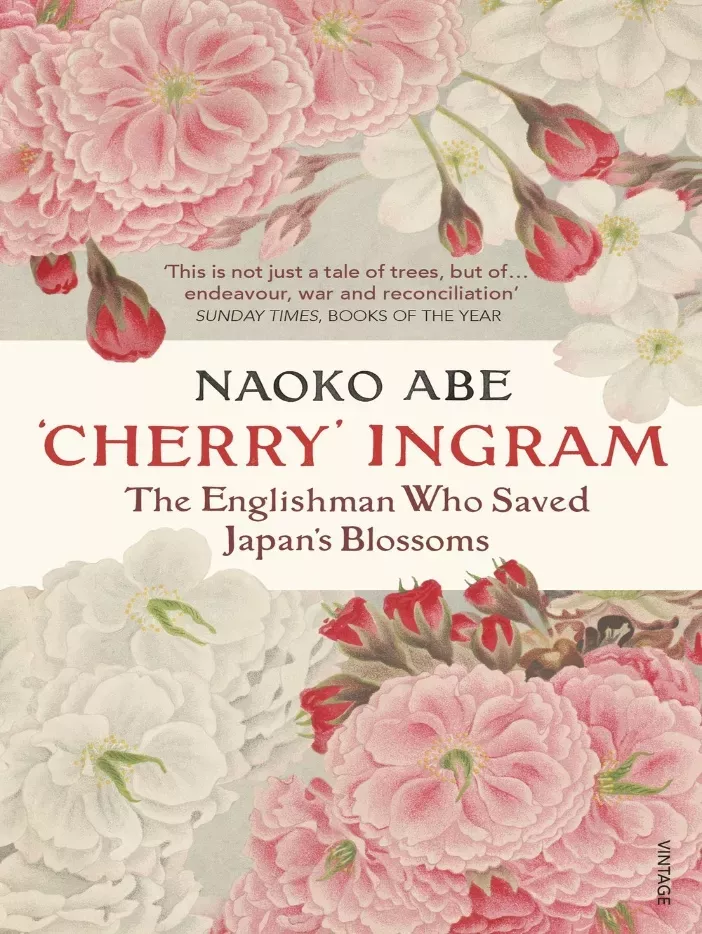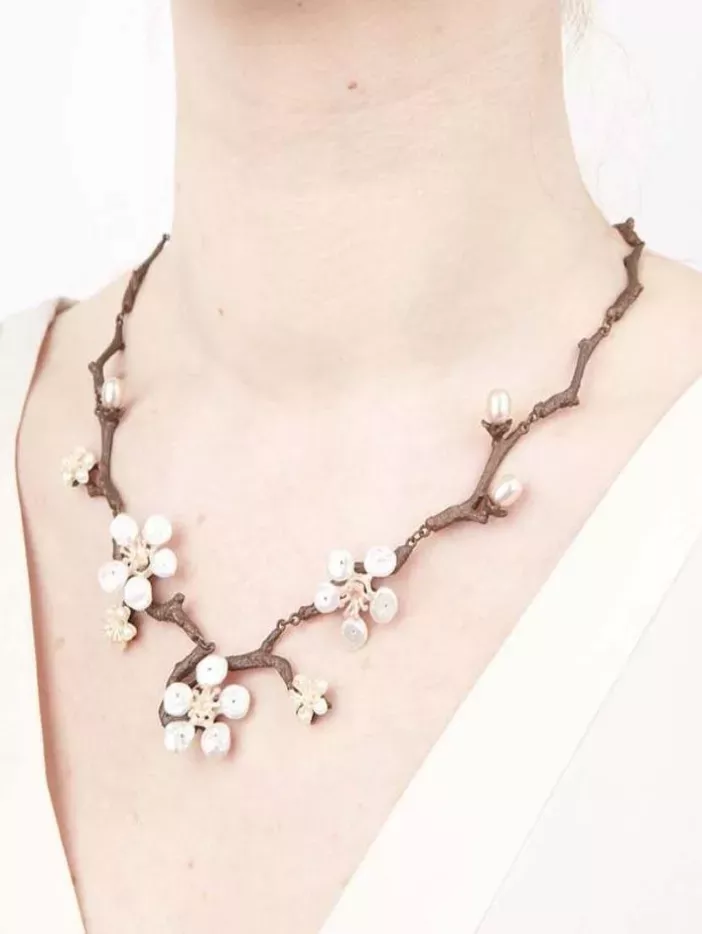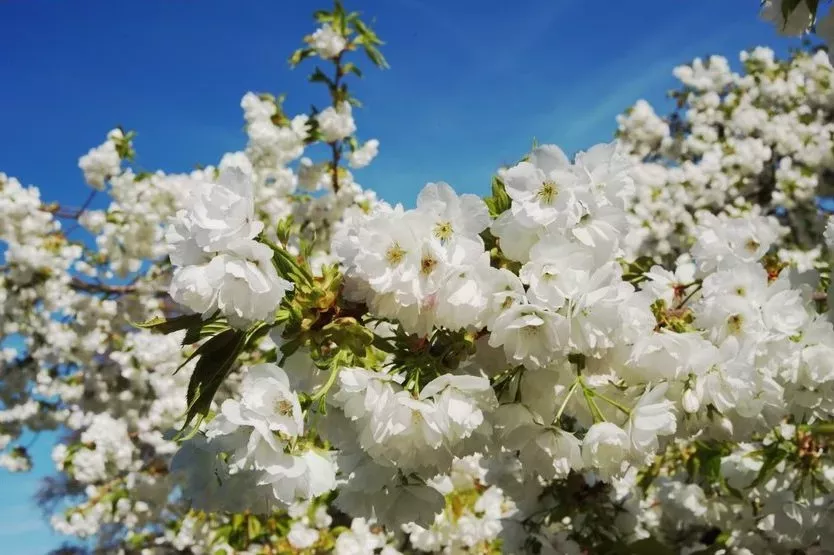
Japanese cherry
On this page
Spring would not be complete without stunning displays of dainty white and pink Japanese cherry blossoms.
Thousands of people gather each year in Japan to view these spectacular blooms at world-famous cherry blossom festivals.
Sakura is the Japanese word for flowering cherry trees and cherry blossom.
Plant description
Japanese cherry is a tree with a short trunk and dense crown. It has smooth, brown bark and green, serrated leaves that turn yellow or red in autumn. The white to pink flowers grow in clusters, and the fruit are round and black.
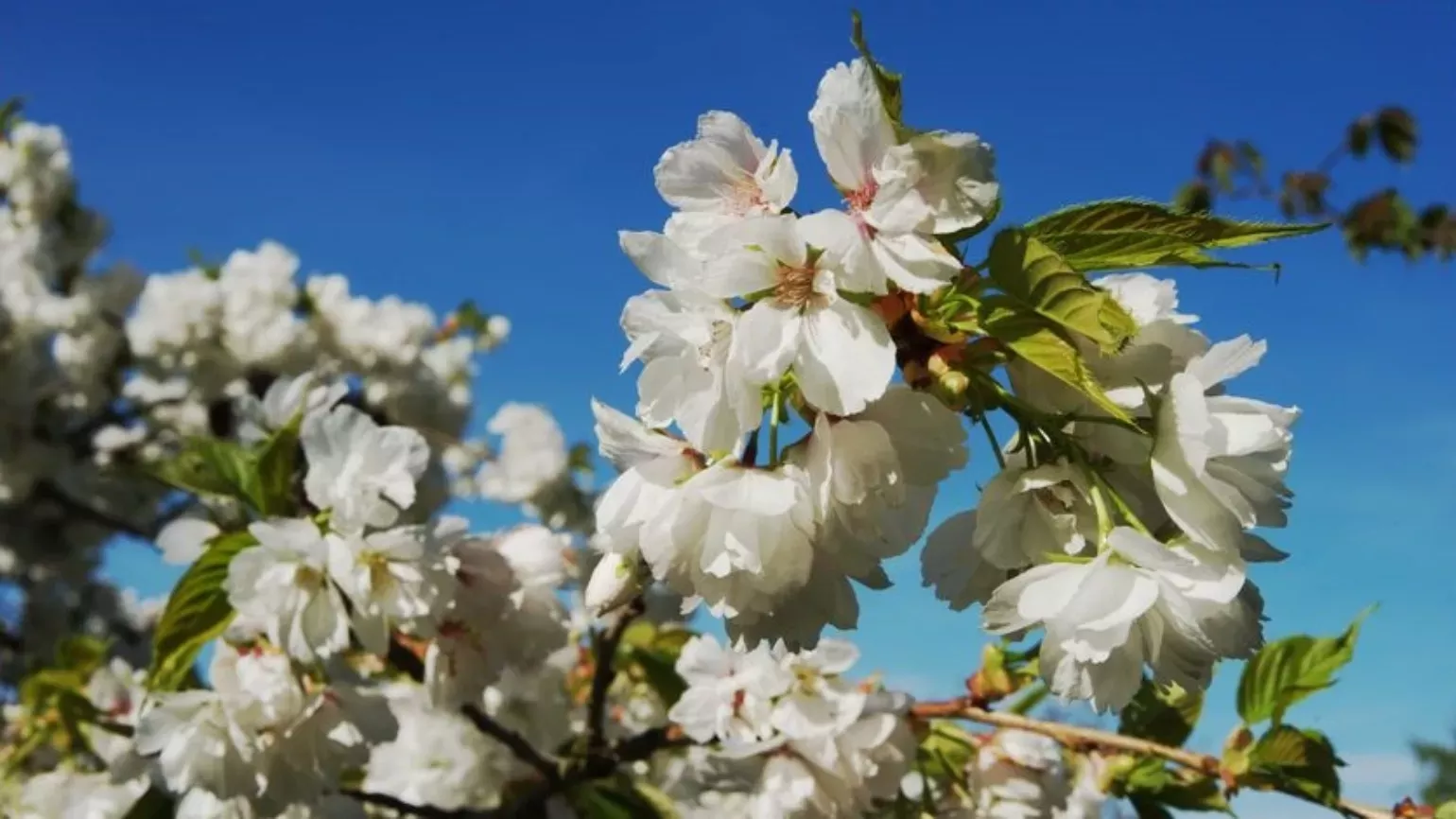
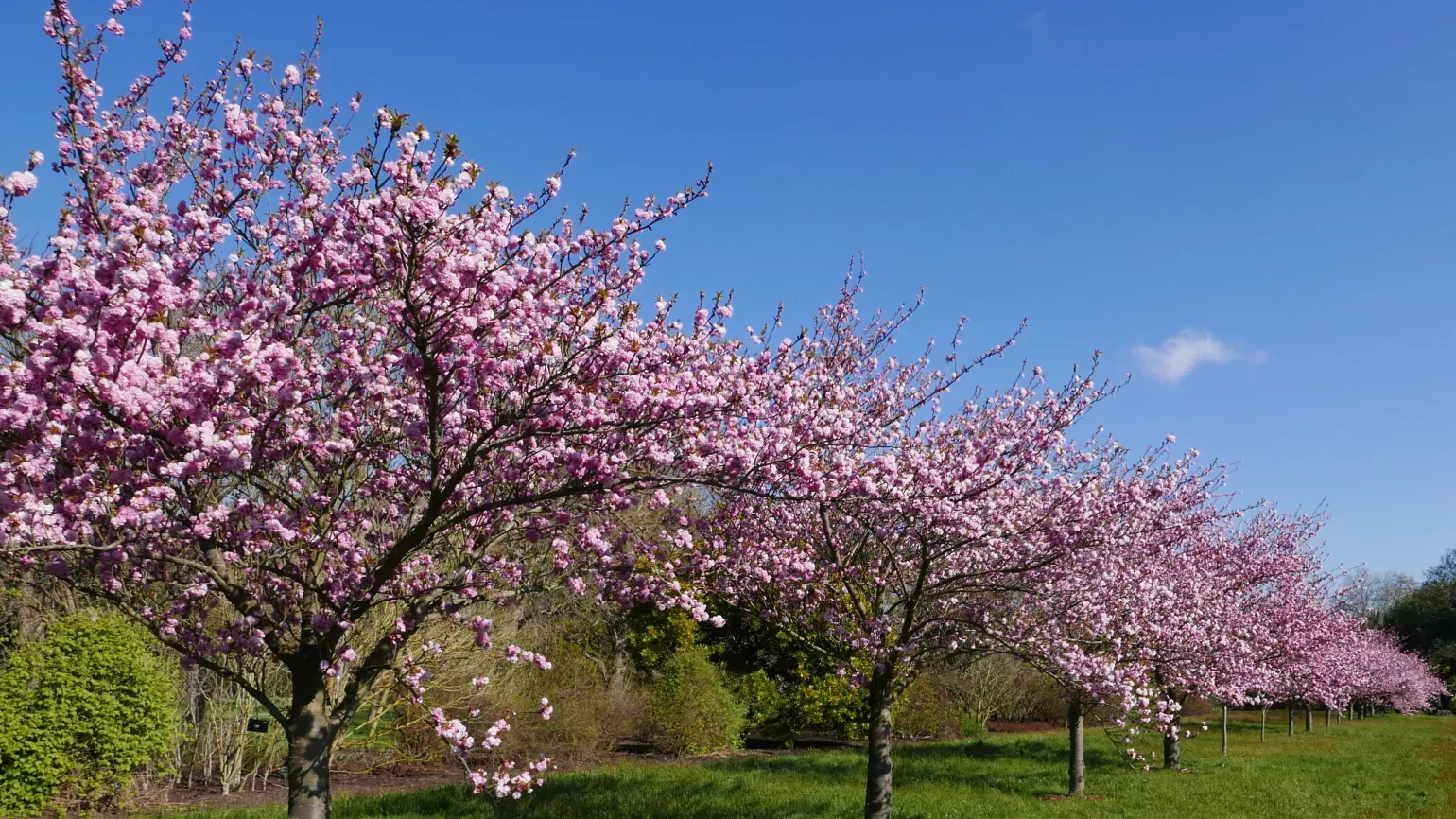
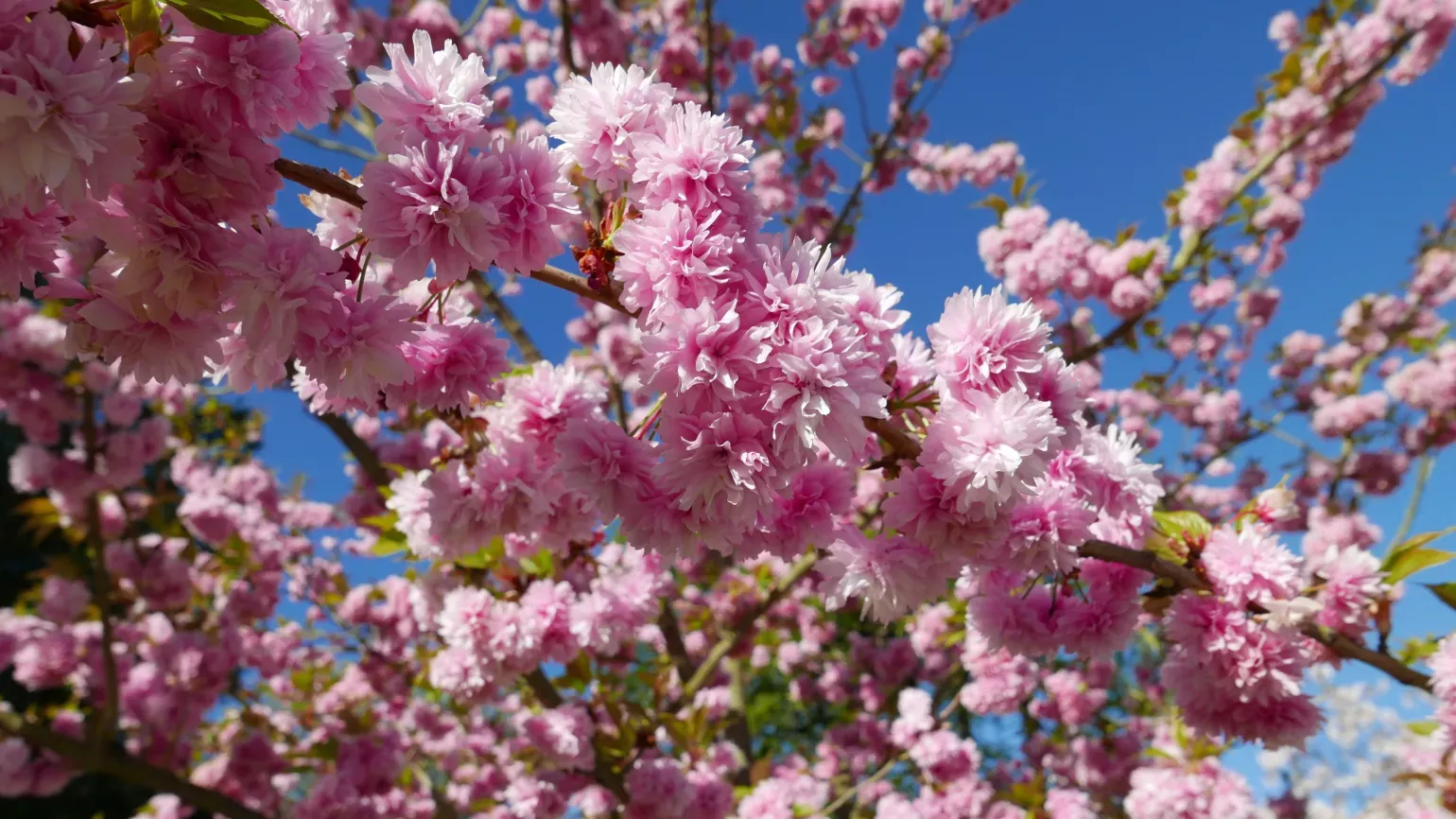
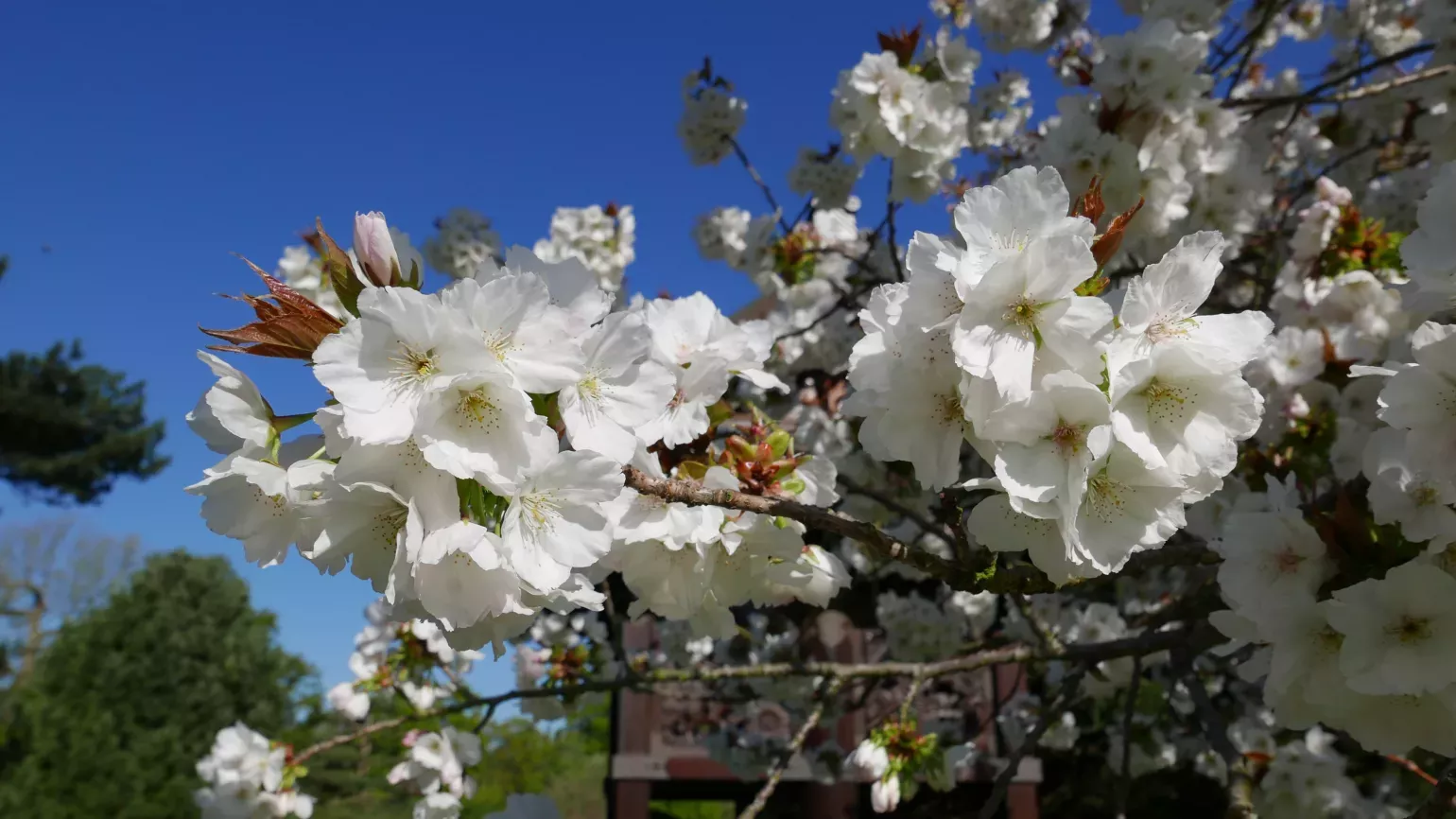
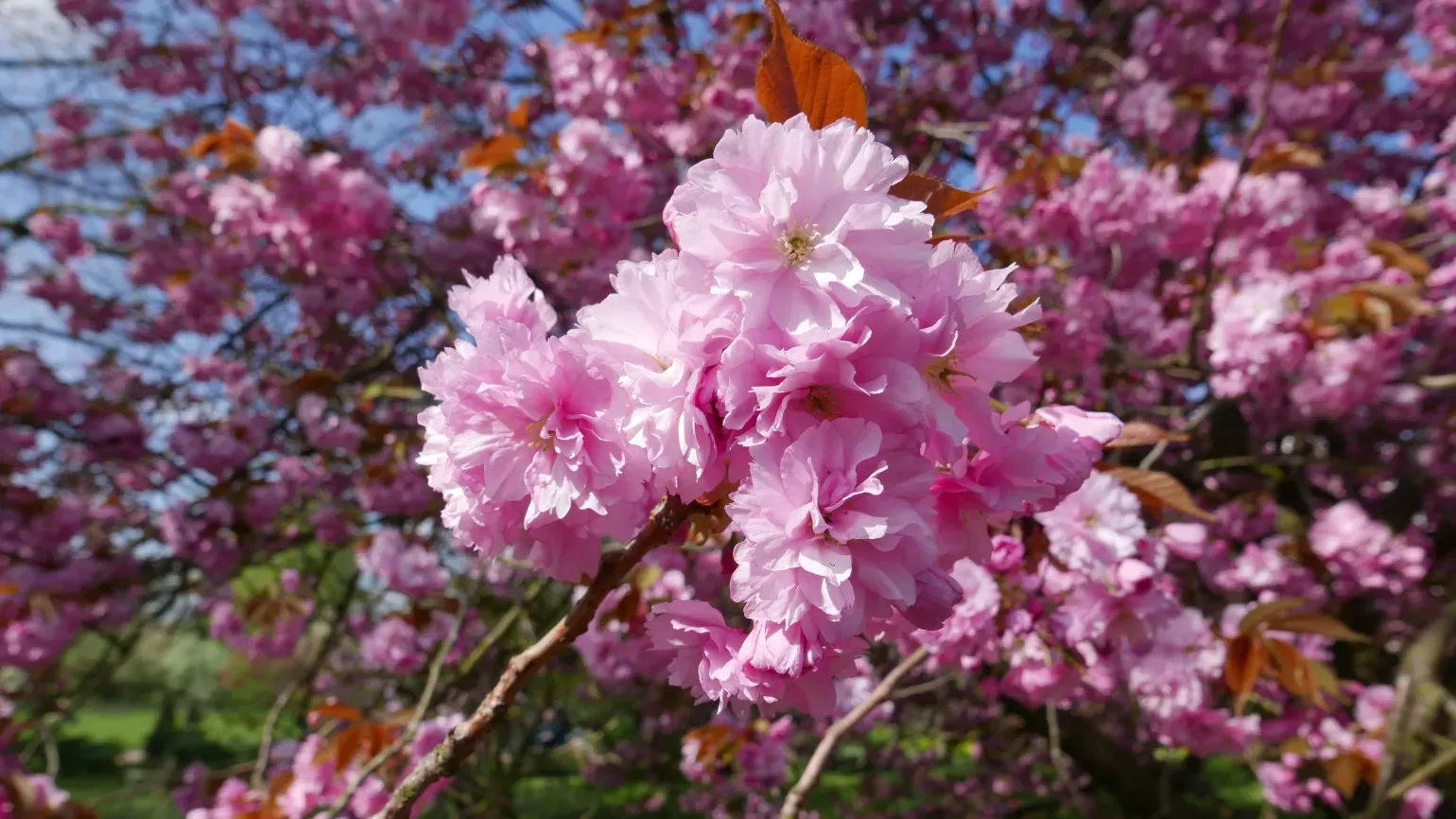
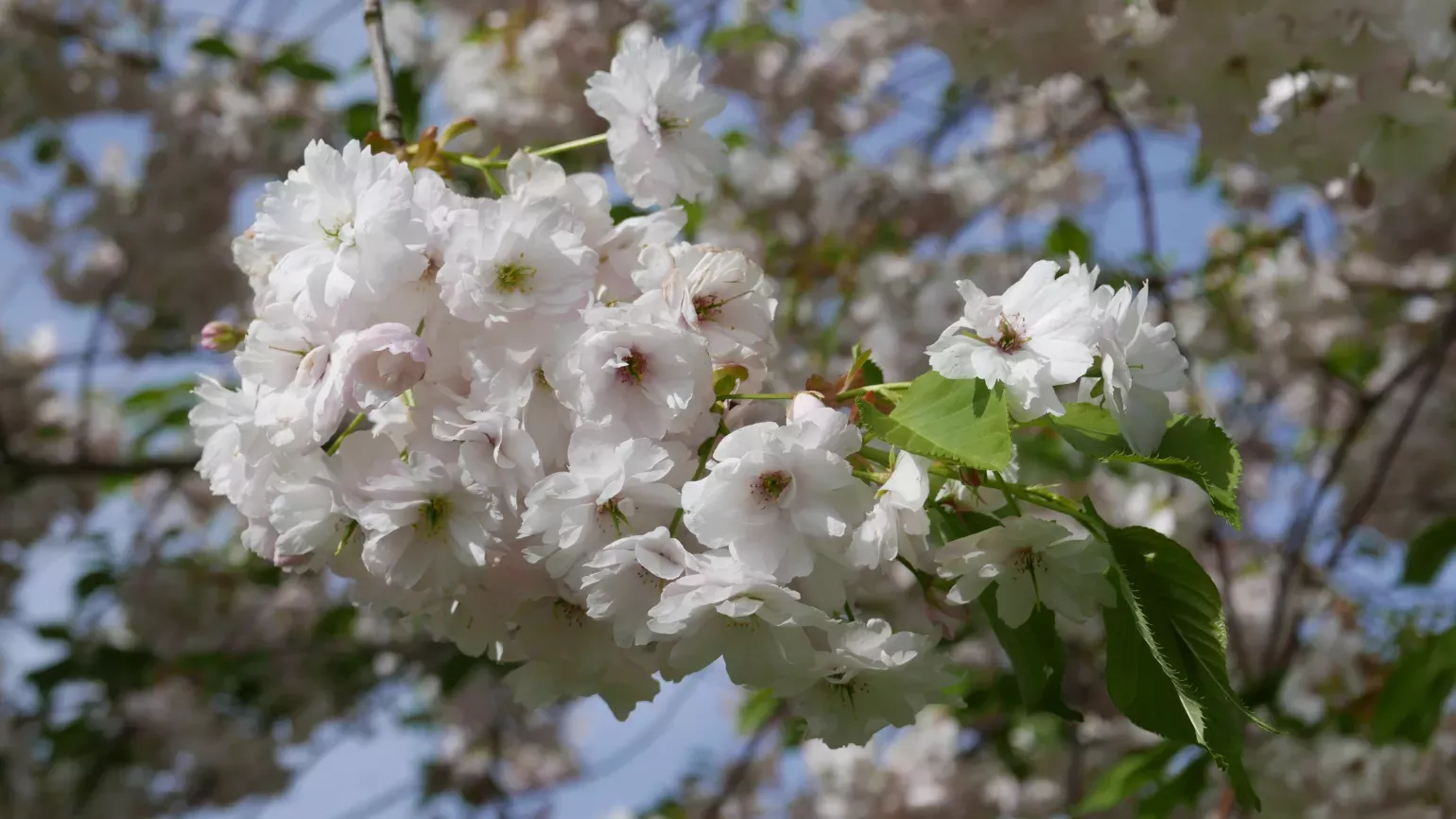
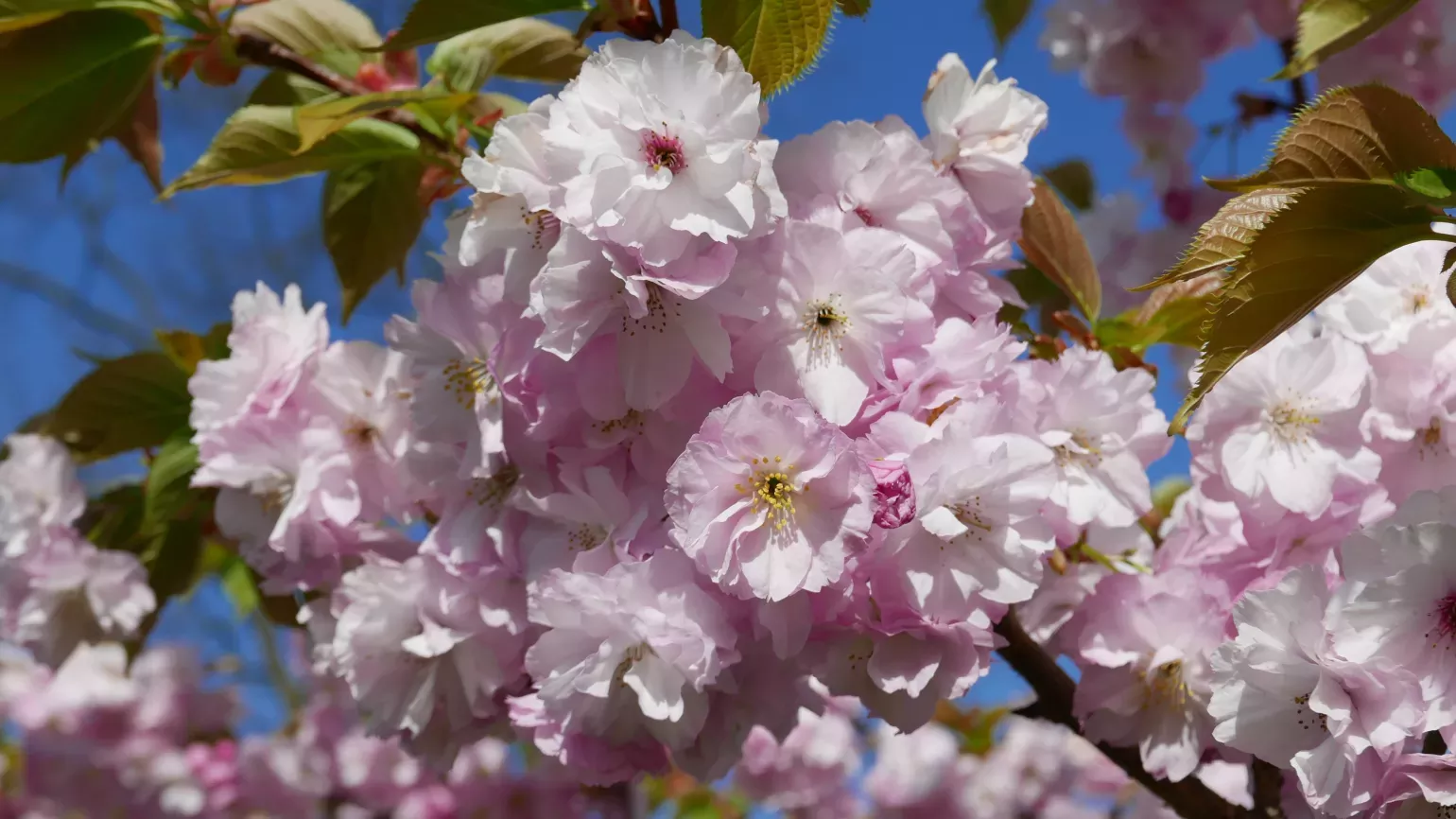
Plant uses
Cultural
Cherry blossoms are considered the national flower of Japan. They herald the start of spring and symbolise life, good health, and happiness.
During the cherry blossom season in Japan, thousands of people gather to view the stunning flowers of Japanese cherry trees, a tradition called ‘hanami’ ('flower viewing'). Cherry blossom festivals known as ‘sakura matsuri’ are held across the country.
Japanese cherry is a popular ornamental tree both in its native countries and in temperate regions across the world.
Did you know?
A great white cherry (Prunus 'Taihaku') grows next to the Gateway in our Japanese Landscape. This species was thought to be extinct in Japan in the 1920s when an English plant collector, Collingwood Ingram, matched a tree growing in Sussex to a Japanese painting of a white cherry.
Japanese cherry trees only blossom for a short period of time, so diverse varieties with different flowering times are often planted together to prolong the blossoming period.
Where in the world?
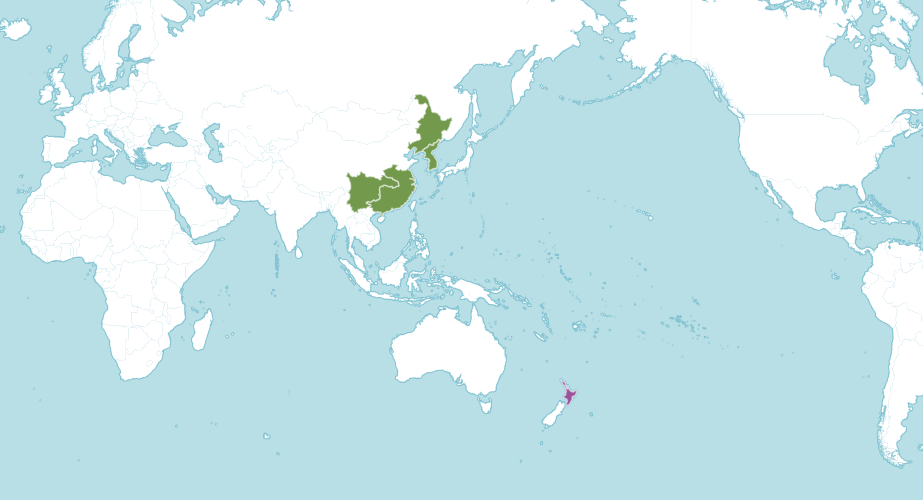
Find it in our gardens
Kew Gardens
A botanic garden in southwest London with the world’s most diverse living plant collection.
Location
Cherry Walk that runs from the Rose Garden behind the Palm House to the Mediterranean Garden.
View map of Kew Gardens